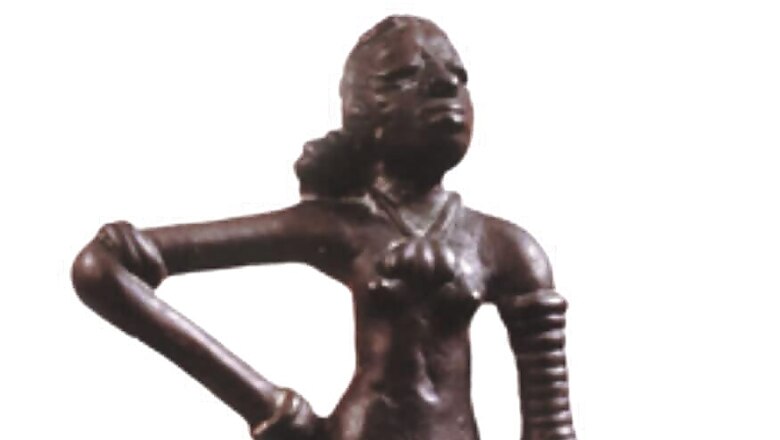
views
New Delhi: A historian who identified a 4,500-year-old iconic bronze figurine as Parvati has also claimed that the tradition of Hindu women applying sindoor (vermilion) on their forehead dates back to the Harappan era.
Retired Banaras Hindu University professor Thakur Prasad Verma in a controversial article in Itihaas – the Hindi journal of the Indian Council for Historical Research — had claimed that the ‘Dancing Girl’ of Mohenjo-daro in 1926 is identified with Parvati.
“The practice of smearing sindoor dates back to Harappa, and we get this information from the excavations done in Pakistan’s Nausharo and Mehrgarh. The statues unearthed still show the parting for applying sindoor,” Verma’s article says.
“This is ironical that our country’s archeology is prey to western prejudice (hath dharmi). It would have been right to view Harappan civilisation as part of Vedic Civilisation and the research should have been done by making the Vedic experts its true directors for research. But the contrary has happened. Even after 94 years nothing has been done to connect the two – Vedic and Harappan civilisations. The western narrative has completely entangled it. Even after winning Independence we are not able to tell the world that Puranas and Vedas are declaring our civilisation,” he writes.

(Photo Courtesy: National Museum)
In the same paper, he has re-imagined the ‘Priest-King’ as ‘Shiv Bhakt Raja’, and has compared the robe that the King is draping to the contemporary ‘Ramnanmi of Ram devotees’. Verma has likened the figure of a woman found on Mahishasurmardini muhar (seal) of Harappa to Durga.
Verma argues that where there is Shiva, there should also be Shiva-Shakti because without that Shiva is incomplete. “There is enough evidence about Shiva but archeology is silent on Parvati,” he says.
However, historian and former Delhi University professor DN Jha said Shiva was a later phenomenon.
“Shiva came much later. Where there is Shiva there should be Parvati, I must say where there is TP Verma, there is ignorance,” he told News18.
Meera Vishwanathan, assistant professor in ancient history in Shiv Nadar University, said Verma was trying to take things out of context.
“What they do is take disparate parts of modern rituals and religious practice and connect them without showing any kind of historical linkage. Look at the claim for Vedic civilisation, which cannot be supported by the evidence we have from that time. The problem of looking at what is called the proto-historic period, which is roughly the period from 2500 BC to 600 BC, is that for archeological evidence you only have the Indus Civilisation and for the text you only have the Vedic text but two cannot be compared or combined. They are taking things out of context and have tried to join the dots across time,” she said.


















Comments
0 comment